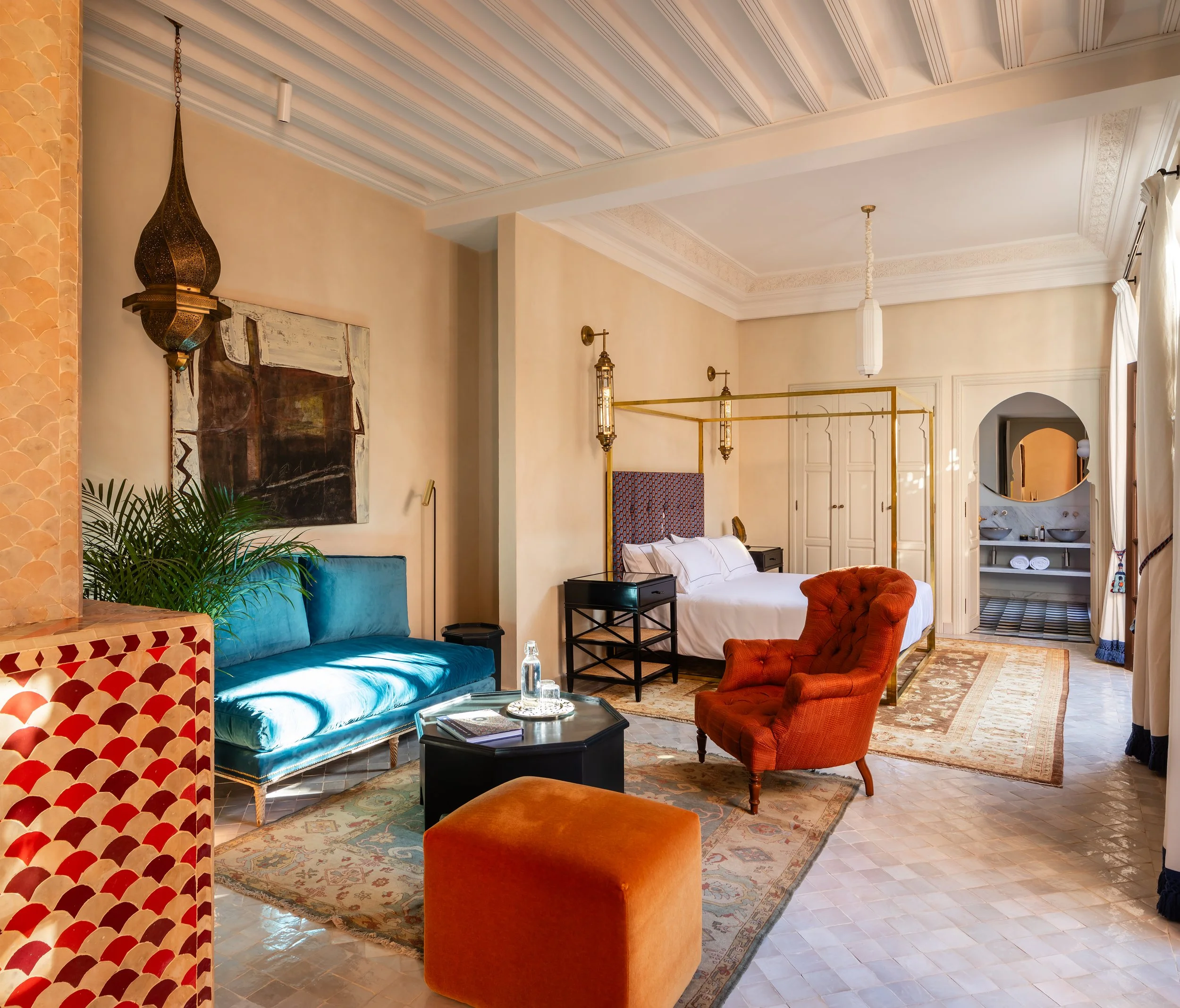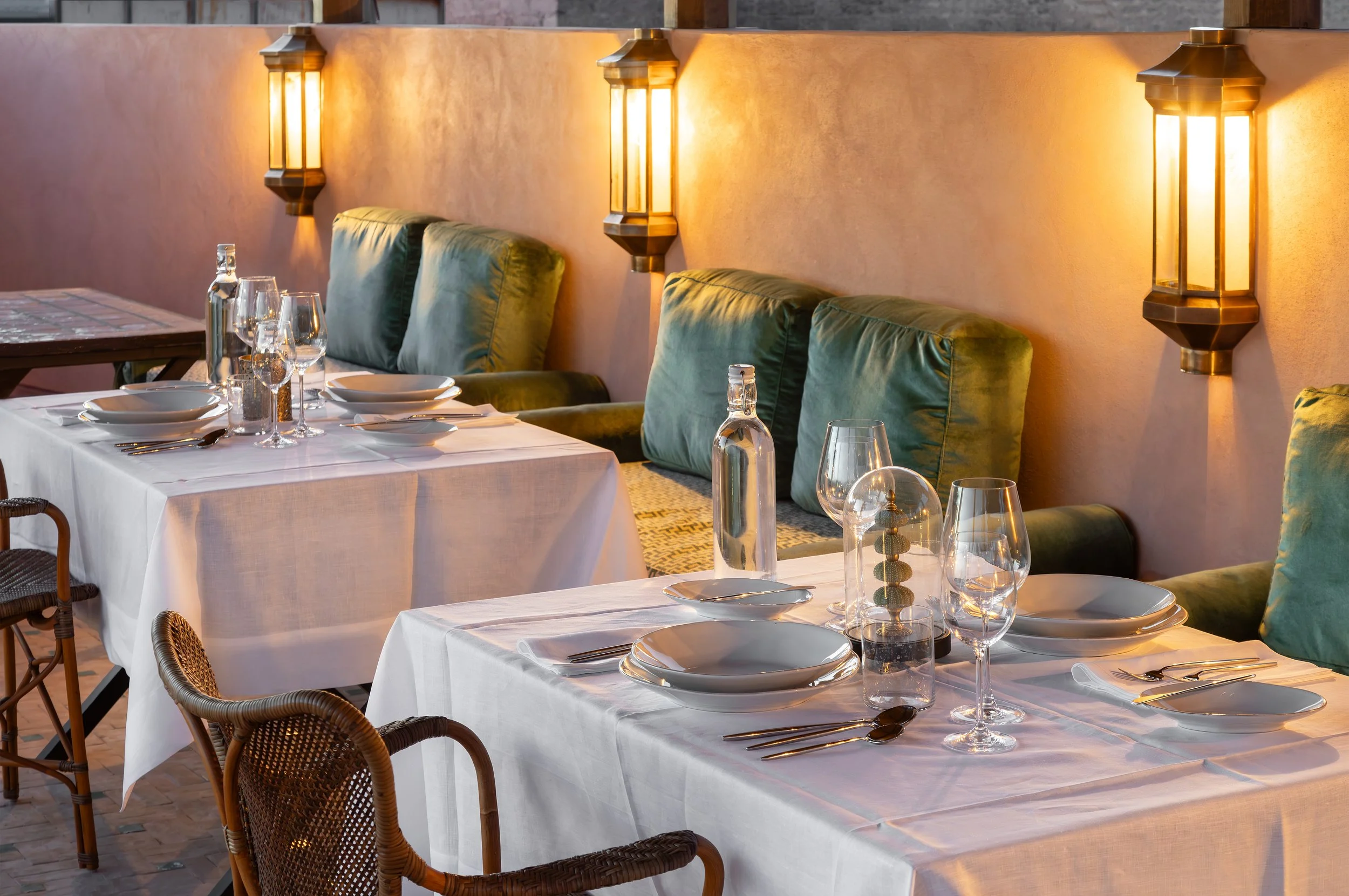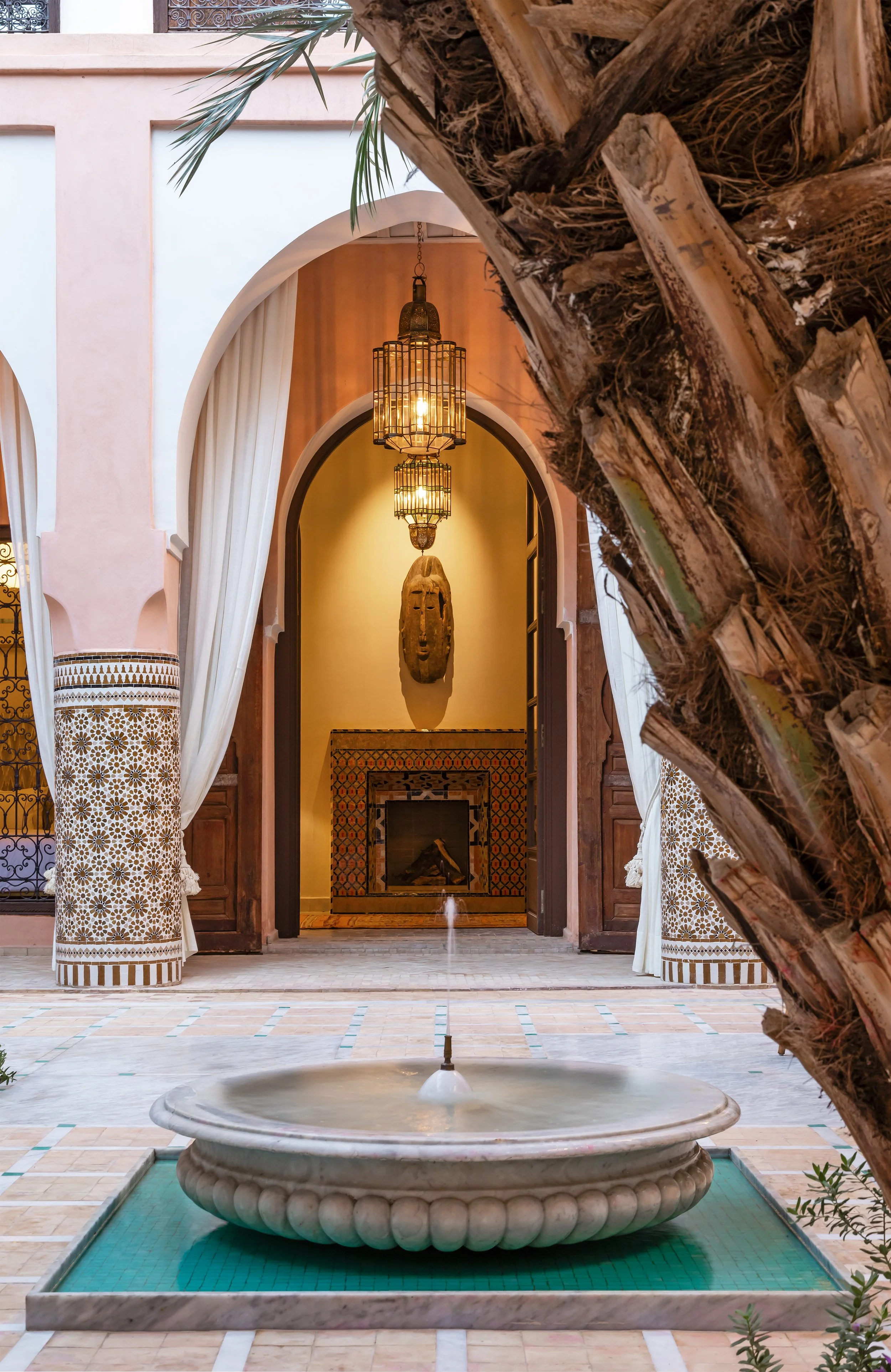This Time, Marrakech: Inside the Magic of Riad Dar Al Dall
During my recent travels in Morocco, I stayed in many riads—each unique, charming, and full of character. But none quite like Riad Dar Al Dall, part of the "This Time Tomorrow" collection in Marrakech. This place is different—not just from other riads, but from anywhere I’ve ever stayed. With only five rooms, the experience is intentionally intimate and personalised. In fact, it starts before you even arrive.
After booking, you receive a thoughtful questionnaire. It asks what you like, what you want to do, and how you travel. And from your responses, they create a bespoke itinerary just for you. This isn’t just hospitality—it’s curation. And it sets the tone for what’s to come.
When I arrived in the medina, the manager of the riad, Alec, met me where I’d parked and guided me through the winding alleys to the property. If you prefer, they also offer airport pick-up. I was welcomed inside with a warm cup of Moroccan mint tea and traditional sweets. It was already clear: this wasn’t just a place to sleep—it was a home.
The riad is adults-only (for guests over 14), which lends it a wonderfully serene and quiet atmosphere. You can truly hear yourself think. The location is within the historic Kaat Benahid neighbourhood, one of the oldest parts of the Marrakech medina—approximately 1,000 years old—where traders and craftsmen once settled, and history is deeply ingrained in the walls.
My room was a revelation. A private balcony, a cosy living room, and light pouring through the windows. I didn’t want to leave. But when I did, I went up to the rooftop to watch the sunset. If you go, don’t miss this moment—the sky turns soft gold, then deep rose, and all of Marrakech seems to breathe with you.
Dinner that night was included, and felt like a celebration prepared just for me. The menu had been designed based on my questionnaire responses. I was the only guest dining at that time, with a waiter dedicated to me, and each course felt more special than the last. We started with Zaalouk de Chou-Fleur—a cauliflower-based dish that was perfectly seasoned and warm, rich with flavour. It was, without exaggeration, one of the best starters I’ve ever had in my life. The main course was Seffa, a slow-cooked, cinnamon-kissed dish of chicken with almonds, deeply rooted in local tradition. Dessert was a Gâteau à l’Orange—light, fragrant, and deeply nostalgic. It reminded me of home.
The next morning, I followed the itinerary they’d designed for me, wandering the medina to visit the Madrasa Ben Youssef—an ancient Islamic school filled with stunning tile work and geometric carvings, a quiet oasis of knowledge and beauty. From there, I strolled to Le Jardin Secret, a lush garden hidden behind medina walls, and then to Dar el Bacha, a palace turned museum of confluences that brings together Moroccan and international art in the most tasteful way.
After walking all day, I returned to the riad for a spa treatment. I’d originally planned to experience the hammam, but having recently discovered I was pregnant, they kindly arranged a foot massage instead. It was thoughtful and perfectly suited. I was served verbena tea during the treatment—light, floral, calming.
Just before sunset, I joined their Moroccan afternoon tea ritual, where I learned how to prepare the traditional mint tea—a ritual of pouring, scent, and warmth. It was engaging in that quiet, beautiful way that only deeply cultural experiences are.
Dinner that evening was out, at Le Foundouk—a stylish local recommendation from the staff, and a perfect way to close the day.
One of the highlights of my stay was the connection with the people who work there. Conversations flowed naturally—about food, art, family, and the dreams behind the riad. They told me this place took seven years to complete. The building is nearly 300 years old, and its restoration was a labour of love. Some elements—like the front doors and the layout—are original. Other parts were rebuilt with intention, care, and design led by the brilliant minds at Trab Design and Recdi8. Every corner reflects craftsmanship and emotional intelligence, creating an atmosphere that feels simultaneously historic and contemporary.
Each room is distinct. Some have skylights, others have fireplaces. There’s a communal living room for guests, a fireplace-lit dining room for private dinners in winter, and always a sense that you're being welcomed not just into a space, but into a story. Alec F, the manager, said, “We want people to connect with real Moroccans, not just guides or tour operators.” It shows.
They offer many experiences here: one-on-one cooking classes, personalised private dinners, and my favourite—visiting a Moroccan calligrapher who once created invitations for the king. The most popular experience among guests is preparing a traditional dish called tangia, cooked over the ashes of public hammams for six hours. It’s not something you’ll find on tour booking sites—it’s the kind of experience only a place like this can offer.
Everything here is done with purpose. From the art (some painted by the founder’s grandfather) to the cutlery and cushions. Even the plates have stories. And the view from the rooftop? You can see the Koutoubia Mosque, the mountains, and the whole Medina breathing around you.
Behind the scenes, two talented chefs—Chaimae and Zakia—lead the kitchen with heart and precision. Whether you’re having breakfast, tea, or dinner, you taste their attention and love in every bite. Their food doesn’t just nourish; it speaks.
Riad Dar Al Dall isn't just a place to stay—it's an experience that unfolds moment by moment. You feel it in the silence between the call to prayer, in the warm greetings from the staff, in the way dinner is plated just for you. I left with the sense that I hadn’t just visited Marrakech—I had lived in it, even for a short while, with all the layers of care, history, and hospitality that come with that.
This was more than a hotel stay. It was a journey of details, senses, and connection. And I can’t wait to return—maybe next time, for that hammam.











